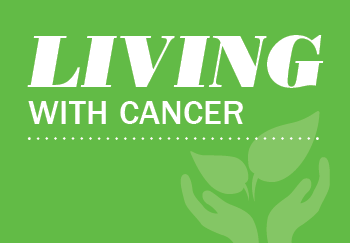 You’ve received a clean bill of health after completing breast cancer treatment and life is returning to a new normal. Now it’s time for your first post-treatment mammogram and that’s bound to stir up a lot of emotions.
You’ve received a clean bill of health after completing breast cancer treatment and life is returning to a new normal. Now it’s time for your first post-treatment mammogram and that’s bound to stir up a lot of emotions.
It’s all too easy to think the worst when you get that first mammogram after breast cancer. However, mammograms are a vital part of survivorship for most patients. Knowing what to expect, both emotionally and physically, helps you feel comfortable and confident before your appointment.
Expect Emotions to Run High
Regardless of whether you found mammograms to be particularly stressful before your diagnosis, it’s perfectly natural to feel some anxiety following treatment. It will be helpful to develop some long-term strategies for coping.
Your first step is to get into the right mindset. Even if cancer does recur, keeping up with your mammograms is your best bet for a prompt diagnosis. It may help to remind yourself that you’re doing the single best thing to preserve your health. Possibly put a reminder of this in your planner or phone or on your refrigerator to reaffirm this fact. The American Cancer Society suggests discussing your survivorship care plan with your doctor to provide you peace of mind. Also, tell your technician that it’s your first mammogram since ending treatment.
Whatever comes up, your best line of defense is what you already know. Apply the same coping techniques you used during treatment. Whether it’s mindfulness, meditation, deep breathing, making lists, reading a book, or something else, you most likely learned how to handle stressful situations. Use these skills before and after your mammogram appointment.
Mammogram After Mastectomy
According to the American Cancer Society, the type of cancer treatment you had will determine how often you’ll need mammograms as a survivor. The rule of thumb is that any remaining breast tissue will need regular scans. That means that if you’ve had a mastectomy you won’t need routine screening mammograms on the side that had surgery. While cancer can come back in your skin or chest wall where you had mastectomy, your doctor will check for that manually during a physical exam.
Your doctor will determine how often you’ll need mammograms of your remaining breast and outline this in your survivorship care plan. If you had both breasts removed, you won’t need mammograms at all.
Get Screened
Talk to a provider about breast cancer screening concerns and best practices.
Mammogram After Lumpectomy
The American Cancer Society also reports that most experts advise women who have had breast-conserving surgery to get a mammogram of the treated breast six months after the end of radiation treatment. This mammogram will become the new baseline for your future scans. Depending on the results, your next mammogram may be six to 12 months later. Follow-up mammograms of the treated breast should be done at least annually after that and routine mammograms still need to be done on the opposite breast. Some doctors may recommend you have mammograms more often. Your oncologist will make specific mammogram recommendations for you based on the treatment you had and other factors unique to your case.
You won’t know ahead of time the exact results from your first mammogram after breast cancer treatment but you can prepare. Having coping mechanisms and the right knowledge will make the experience bearable and, maybe, even liberating.
